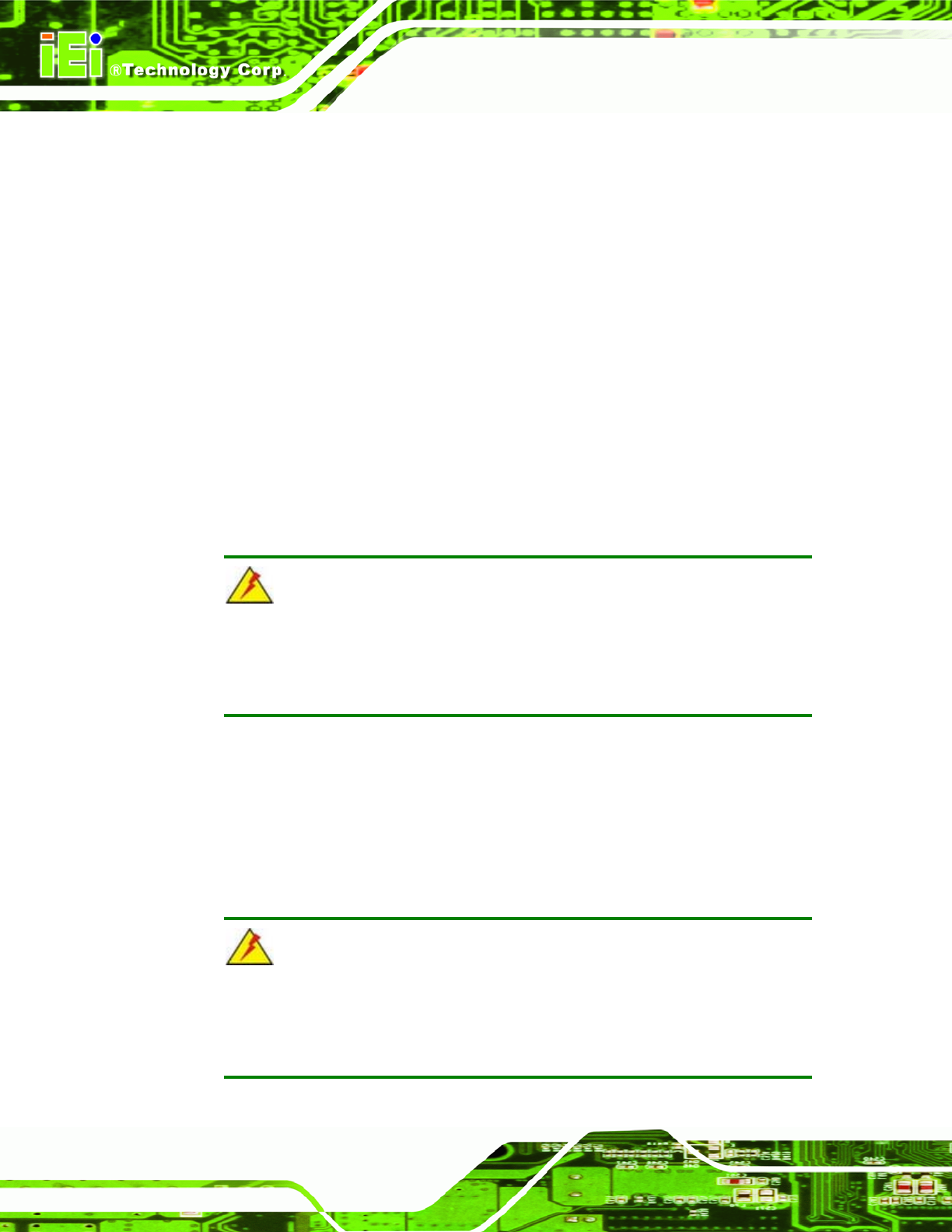Owner manual
Table Of Contents
- NANO-LX EPIC SBC User Manual
- 1 Introduction
- 2 Detailed Specifications
- 2.1 Overview
- 2.2 Dimensions
- 2.3 Data Flow
- 2.4 CPU Support
- 2.5 System Chipset
- 2.5.1 GeodeLink™ Interface Unit
- 2.5.2 AMD® Geode™ CS5536 ATA-6 Controller
- 2.5.3 AMD® Geode™ CS5536 Audio Codec 97 (AC’97) Controller
- 2.5.4 AMD® Geode™ CS5536 Flash Interface
- 2.5.5 AMD® Geode™ CS5536 USB Controller
- 2.5.6 AMD® Geode™ CS5536 Serial Communications
- 2.5.7 AMD® Geode™ CS5536 Real Time Clock
- 2.5.8 BIOS
- 2.6 GeodeLink™ PCI Bridge
- 2.7 Environmental and Power Specifications
- 3 Unpacking
- 4 Connectors and Jumpers
- 4.1 Peripheral Interface Connectors
- 4.2 Internal Peripheral Connectors
- 4.2.1 ATX Connector
- 4.2.2 ATX Power Button
- 4.2.3 Audio CD-In Connector
- 4.2.4 Audio Connector
- 4.2.5 Battery Connector
- 4.2.6 Compact Flash Connector
- 4.2.7 Digital Input Output Connector
- 4.2.8 Fan Connector
- 4.2.9 FDD Connector
- 4.2.10 IDE Interface Connector
- 4.2.11 Inverter Connector
- 4.2.12 IrDA Connector
- 4.2.13 Keyboard/Mouse Connector
- 4.2.14 LED Power Connector
- 4.2.15 LVDS LCD Panel Connector
- 4.2.16 Parallel Port Connector
- 4.2.17 PC/104-Plus Connector
- 4.2.18 Power Connector
- 4.2.19 Power Input Connector
- 4.2.20 Reset Button Connector
- 4.2.21 SATA Drive Ports
- 4.2.22 Serial Communications Connector
- 4.2.23 TFT TTL LCD Connector
- 4.3 External (Rear Panel) Connectors
- 5 Installation and Configuration
- 6 Award BIOS Setup
- 7 Software Drivers
- A BIOS Configuration Options
- B Watchdog Timer
- C Address Mapping
- D External AC’97 Audio CODEC
- E ALi® RAID for SATA
- F Connecting an ATX Power Supply
- G Index

NANO-LX EPIC SBC
E.5.4 Stripe Size
The change to stripe size effects RAID0 arrays. Configurable options are:
64K (default)
32K
16K
8K
4K
Select a small stripe size if the I/Os to the hard drives are small and randomly occurred.
Choose a larger stripe size if the I/Os are mostly large and come in sequential orders, e.g.,
A/V playback and editing applications. The default value should be appropriate for most
applications.
E.5.5 Delete RAID Setting & Partition
WARNING!
If a RAID configuration is deleted, all data previously stored on the member
drives of the RAID configuration will also be deleted.
Step 1: Use the arrow keys to highlight Delete RAID Setting & Partition and press
E
NTER. A flashing ‘E’ appears at the Drive Menu where the member drives to be
removed can be chosen.
Step 2: The Data on RAID drives will be erased (Y/N) confirm box appears. Press Y.
Step 0:
E.5.6 Delete All RAID Setting & Partition
WARNING!
If a RAID configuration is deleted, all data previously stored on the member
drives of the RAID configuration will also be deleted.
Step 1: Use the arrow keys to highlight Delete All RAID Setting & Partition and press
Page 222










